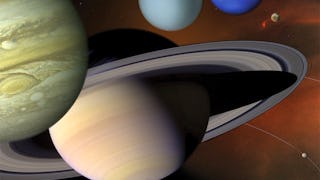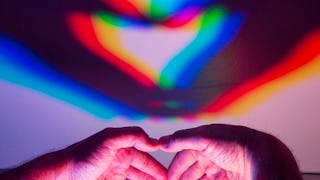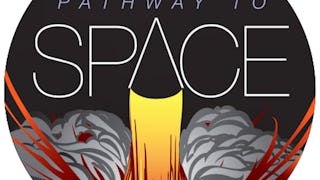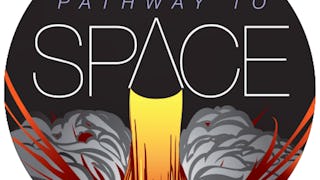A total eclipse is one of the most spectacular sights you can ever see! It looks like the end of the world may be at hand. There is a black hole in the sky where the sun should be. Pink flames of solar prominences and long silver streamers of the sun's corona stretch across the sky. It gets cold, and animals do strange things. People scream and shout and cheer, and remember the experience their whole life. But total eclipses are important scientifically as well. They let us see parts of the sun’s atmosphere that are otherwise invisible. A total eclipse presented the first chance to test Einstein’s prediction that matter can bend space – like near a black hole. The best total eclipse in the United States in 40 years happens August 21st, 2017.

Unlock access to 10,000+ courses with Coursera Plus. Start 7-Day free trial.

The Sun and the Total Eclipse of August 2017

Instructor: Douglas Duncan
5,559 already enrolled
Included with
(69 reviews)
What you'll learn
Describe how to safely watch safely an eclipse
Explain the fundamentals of sun science including the physics of light, how astronomers study the sun, how it formed and how we know what’s inside it
Skills you'll gain
Details to know

Add to your LinkedIn profile
See how employees at top companies are mastering in-demand skills

There are 5 modules in this course
In this module we describe what causes eclipses, how rare it is for any one place to experience a total eclipse, the dramatic difference between a total or a partial eclipse, and encourage you to see the total eclipse on Aug. 21, 2017. We also review the upcoming course topics, demonstrate how large the sun is, and introduce sunspots.
What's included
8 videos1 reading1 assignment1 discussion prompt
In this module we explain how astronomers use visible and invisible light (ultraviolet and X-rays) to study the sun. We learn that all light comes from atoms, and that the quantum world of atoms is like nothing you’ve ever seen! We see how the properties of light let us determine the sun’s temperature, its composition, and the important role of its magnetic fields.
What's included
7 videos1 assignment2 discussion prompts
We can’t see inside the sun with visible light, but there are ways to infer or even see down to the sun’s center, where vast amount of energy are generated, making possible life on earth.
What's included
7 videos1 assignment1 discussion prompt
When you look at Hubble Space Telescope images of beautiful clouds of gas in space you are seeing what happened in our own solar system 4 ½ billion years ago when the sun formed. This week we explain how that process works.
What's included
7 videos1 assignment1 discussion prompt
This Week 5 presentation concentrates on what will happen during the Great American Eclipse of Aug. 21, 2017. It may be viewed alone, or after Weeks 1-4. Weeks 1-4 give a lot of explanation of what you will see, so I hope you take the full course, but if you are in a hurry, this week alone will prepare you.
What's included
4 videos1 assignment2 peer reviews3 discussion prompts
Instructor

Offered by
Explore more from Physics and Astronomy
 Status: Preview
Status: PreviewAmerican Museum of Natural History
 Status: Preview
Status: Preview Status: Free Trial
Status: Free TrialUniversity of Colorado Boulder
 Status: Free Trial
Status: Free TrialUniversity of Colorado Boulder
Why people choose Coursera for their career




Learner reviews
69 reviews
- 5 stars
75.36%
- 4 stars
20.28%
- 3 stars
1.44%
- 2 stars
0%
- 1 star
2.89%
Showing 3 of 69
Reviewed on Apr 27, 2017
The Course was great, except for two things. one it was too short :-), and two, the peer graded projects were confusing.
Reviewed on Sep 8, 2017
The peer review process was confusing when there were no submissions to review. Would like to have more communication about what to do in this instance.
Reviewed on Nov 1, 2017
Good Knowledgeable course for all the students. This course has increased my knowledge about the solar system and earth.

Open new doors with Coursera Plus
Unlimited access to 10,000+ world-class courses, hands-on projects, and job-ready certificate programs - all included in your subscription
Advance your career with an online degree
Earn a degree from world-class universities - 100% online
Join over 3,400 global companies that choose Coursera for Business
Upskill your employees to excel in the digital economy
Frequently asked questions
To access the course materials, assignments and to earn a Certificate, you will need to purchase the Certificate experience when you enroll in a course. You can try a Free Trial instead, or apply for Financial Aid. The course may offer 'Full Course, No Certificate' instead. This option lets you see all course materials, submit required assessments, and get a final grade. This also means that you will not be able to purchase a Certificate experience.
When you purchase a Certificate you get access to all course materials, including graded assignments. Upon completing the course, your electronic Certificate will be added to your Accomplishments page - from there, you can print your Certificate or add it to your LinkedIn profile.
Yes. In select learning programs, you can apply for financial aid or a scholarship if you can’t afford the enrollment fee. If fin aid or scholarship is available for your learning program selection, you’ll find a link to apply on the description page.
More questions
Financial aid available,
¹ Some assignments in this course are AI-graded. For these assignments, your data will be used in accordance with Coursera's Privacy Notice.

